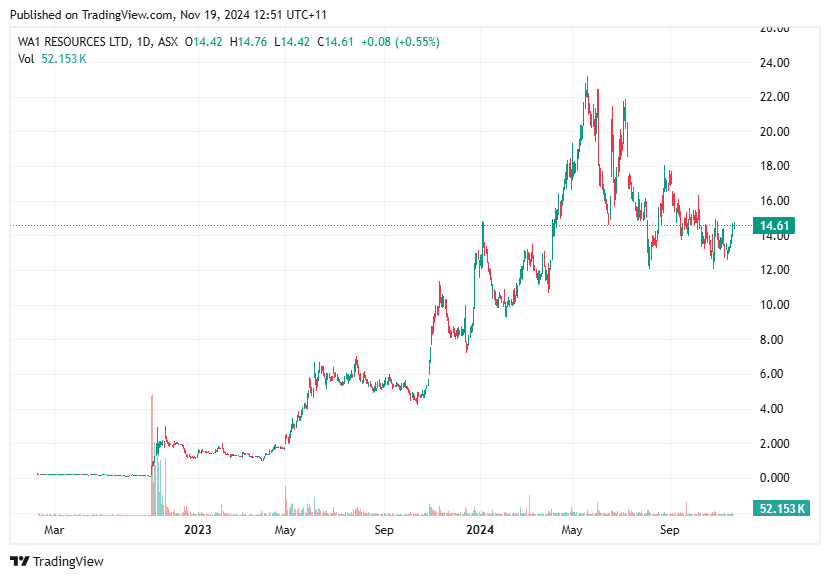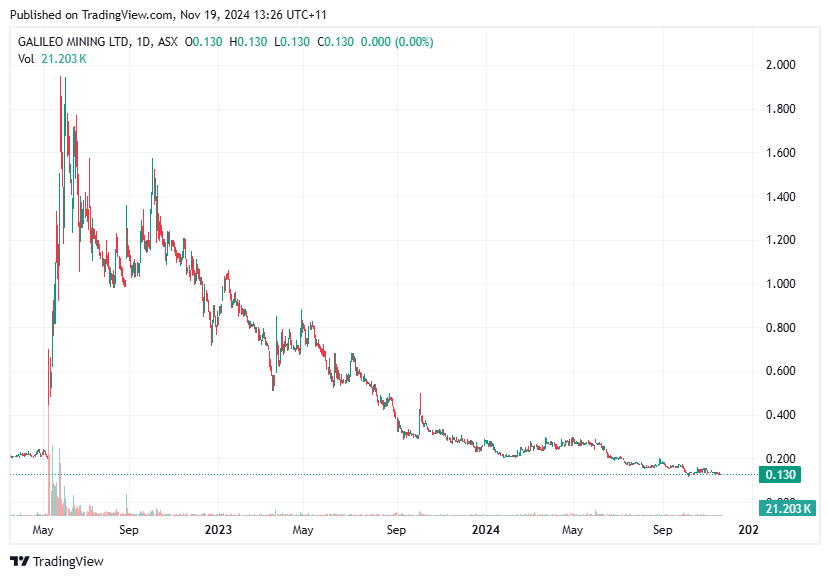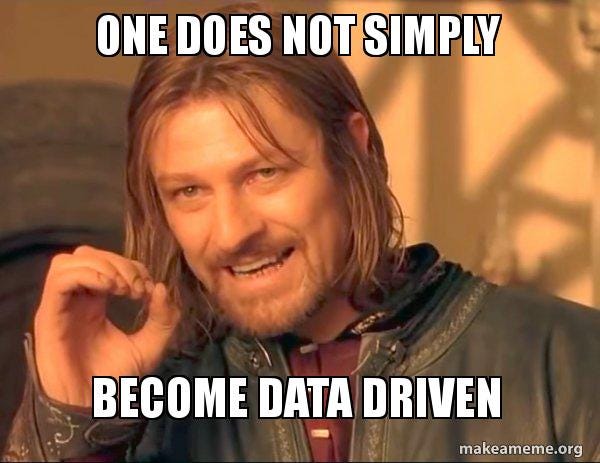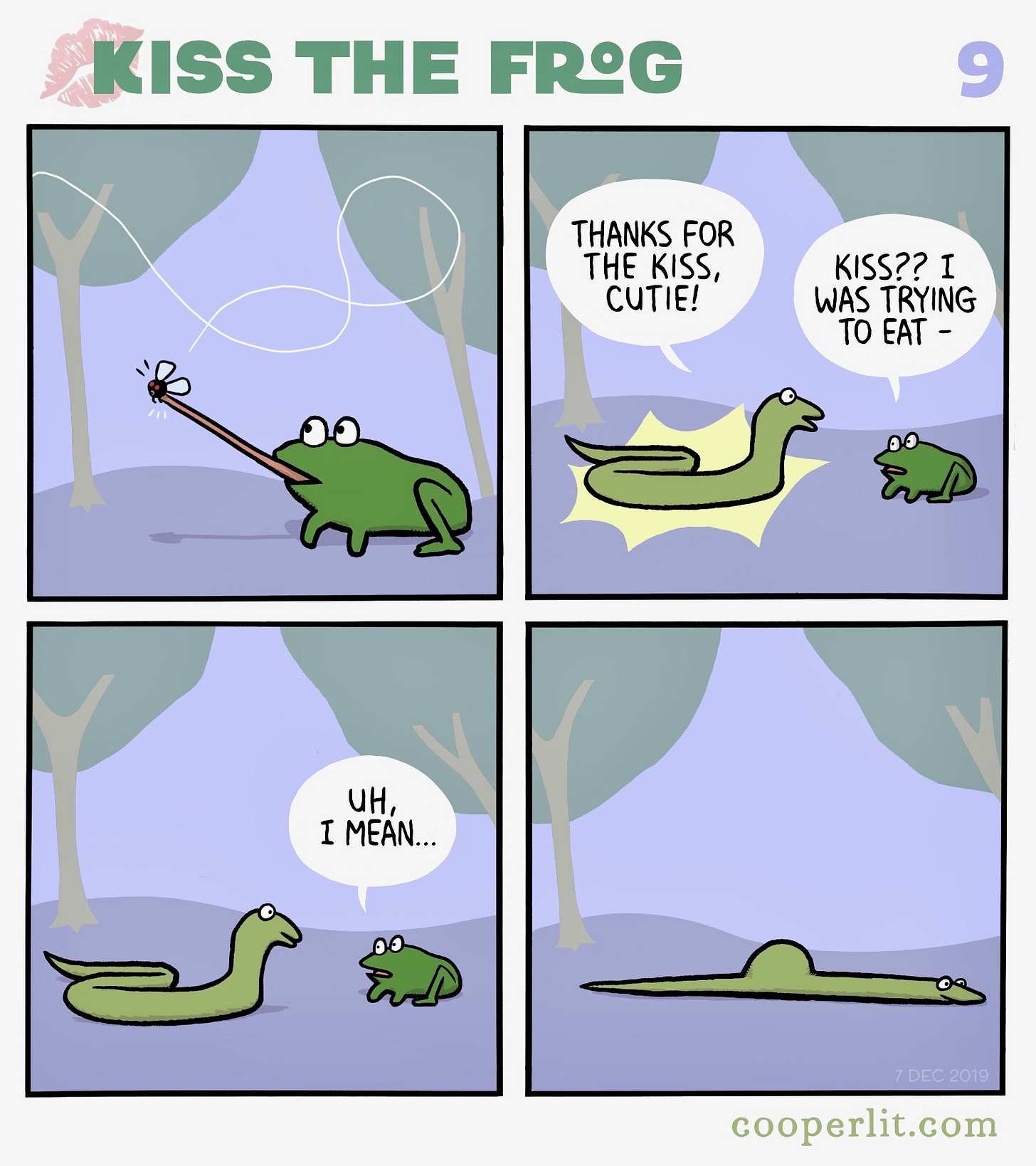Exploration to mine- Risk-Reward evolution and asymmetry maximization
Or "why I buy discoveries and not explorers"
I have made many mentions of choosing to buy discoveries rather than explorers. This piece is a distillation of lots of thinking, along with ceiling and tile staring that attempts to rationalize this world view. Moreover, it seeks to unravel the interplay of various factors that can affect the price of a junior resources company exploring, discovering, defining and studying a deposit with most focus on the early stages.
These processes are considered in the context of risk evolution and those short-lived moments of risk/reward asymmetry most optimal for entry. These are explored in detail and their importance highlighted.
Why is any of this important?
As one gains more experience investing in discoveries, each one comes to be viewed as just another opportunity rather than a potential life-changing event and unique flag fall.
I heard this described once as “you don’t chase trams up Collins street”. The analogy draws on Melbourne’s fine public transport system and the fact that there will always be another tram along in 5 minutes. In the same way another discovery is just around the corner. Even if all the 2000 plus, listed exploration entities in the world drilled holes at random they would still find something. This strategy may even improve the chances of some of them.
In accepting this view of discovery investing, one’s thoughts turn to ideas of process and optimization rather than event prediction. This fulfills the important maxim described by Rick Rule of an investment thesis starting with “WHEN” rather than “IF”.
Investment strategies focused on individual companies making a discovery are “IF” proposals, expectations that someone (anyone) in the market will make a discovery are “WHEN” propositions. Admittedly, I don’t think he had this in mind when he described it.
So now we are secure in the understanding that discoveries will be made, our objective becomes making the greatest ammount of money from each one while at the same time taking on the smallest ammount of risk. Not just risk of loss, but the risk of being trapped in an illiquid entity.
The most important decisions to get right are knowing IF TO ENTER, WHEN TO ENTER, WHEN TO EXIT and POSITION SIZING. I seek to optimize entries when the risk-reward is most favorably asymmetric, and exits when the equation flips, with the potential downside exceeding the potential upside. Position sizing is a consideration that evolves with time and results, generally increasing with project maturities until such time as the project is either not worth further consideration or becomes beholden to commodity price machinations and wider market sentiment. That’s a lot to cram into a paragraph but rest assured I will break these concepts open in easier to understand terms. Of all these considerations the only ones I have been getting right of late have been “IF” and “WHEN” to enter. The others I’m trying to get better at.
Before getting into what I consider to be the most optimal entry point one has to describe the normal habit of exploration companies (baseline) and from that perspective consider the prospect of predicting a discovery, because after all, this is the cheapest nominal point at which a stock can be bought. I highlight the word nominal as on a risk-adjusted basis this is the point at which it is most expensive with the worst risk-reward asymmetry.
All of this can be reduced to, and explored through 3 maxims. I will address the one that took me the longest to work out (or perhaps come to terms with) first.
1. It’s impossible to reliably predict discovery
I’ve been beating around this point for a while but there it is!
I know people who have done it and I too have had it all go right on occasion. However, these instances are rare and generally concentrated in unexplored terrains where the collection of rudimentary datasets such as soil surveying will lead to discovery. This is less likely to succeed in Australia, Canada and other politically stable and mature surficial exploration terranes. It is also becoming rarer elsewhere.
If we consider the typical junior exploration company, it is in essence a value destructive enterprise, traveling along a well trodden path of testing targets and concepts and all the while funding itself through dilutionary capital raisings. Generally, investing in a junior company, (notwithstanding sentiment changes) is down and to the right. There is nothing untoward or malicious about this (in theory; sometimes the low expected success rate can also hide incompetence and maleficence from the untrained). You have to kiss a lot of frogs to make a discovery.
When the right frog is kissed and a discovery is made share prices rise rapidly.
This may be an unpopular opinion but ultimately a liberating one for the serious investor. For one thing capital can be concentrated. The general strategy of holding several names in the hopes of one of them making a discovery is dilutionary and the low liquidity reduces flexibility. Moreover, the level of research needed to find a incipient discovery in amongst 2000 listed entities requires in-excess of full-time job hours along with serious expertise. Most market participants do not have this.
Once we let go of the belief we can predict, we let go of the tendency to extrapolate and waste time.
We stop speculating.
2. The lowest risk adjusted price you can pay for a discovery is on open, the day it is announced

Observe the chart of WA1 from about Mar 2022 to today. Amazing run! I have taken the same chart and annotated it with some color showing distinct “epochs” in the discovery evolution.
This price chart is some ways the inverse of risk. In the Red pre-discovery area the company is exploring, rising and diluting, ultimately destroying value. In the Orange the company has made a discovery, a high potential one at that, but not one that carries any guarantees. The transition between these two is the 26/10/2022 or the day the discovery was announced. That is the lowest risk adjusted price that one can pay for the stock at any point.
Think about it, the stock closed at 13.5 c on the 21/10 and opened at 22.5. It’s up 66.6 % percent which is slightly higher than the IPO price and its about to be a hell of a lot higher. It closed the day at 70c. Its all upside! Why would the stock drop?!
WA1 took a cyclone season related exploration break and when they started announcing the big supergene hits at Luni the Yellow or “this is really significant” phase kicked in just before the Green “this will be a mine” phase.
Each of these transitions is also a opportunity to stage entries as the project is further de-risked and the liquidity increases. The tricky thing for all the young players is knowing if the discovery is real? I’ll deal this with in a future article.
3. Discoveries are not all the same
Contrasting the experience of WA1 below I demonstrate the post discovery experience of GAL and RTR. I add both because I did not want to pick on either. Both had excellent teams whose work I profited from but neither discovery kept getting better and better the way Luni did.


All of this is to say that just as there is a optimal time to enter a stock, there is also a optimal time to exit as most discoveries will not be good enough to become mines or at the very least mines that will be developed in the near term to give shareholders great returns. I keep an eye on how a discovery evolves, and if I suspect that the economics are not first or second quartile I plan my exit.
Closing remarks
I’ve come to this world view primarily through trying to do the exact opposite of what I preach here. Do detailed work on companies and projects to predict discovery. In some instances I got it right. Most of the time I did not. An investment strategy where you get it wrong most of the time does not carry alpha gains despite the overperformance of the instances where you win.
The other problem was that all discoveries carry a component of luck. Given that certain geologist have had repeated successes. Think Mark Bennet, Kevin Frost, Doug Kirwin, Ed Eshuys or most of all David Lowell. We can tell there are formulas that result in success, but there was a lot of other people that made discoveries in the years that the aforementioned superstars were not finding anything. I was invested in companies trading sideways while discoveries were being made and share prices were exploding.
I wanted a piece of every discovery!
Writing this piece required me to relive the full multi-year thought process that led to this investment strategy or rationale. During the exercise I fondly recollected the hours and hours of mowing and edging my lawn while listening to the
where one can get the best insights into how to practically think about statistics and its interplay with emotion. I arrived at this podcast by studying the many podcast appearances of of Bronte Capital. Unfortunately, he does not seem to do these anymore. The key piece of wisdom I got from him was to follow people and automate everything with computers. I highly recommend his very entertaining and detailed explanations. I have enough of this cloud infrastructure now that I am alerted to everything of significance allowing me to have a life and buy all the real discoveries. I miss some, mostly in Canada, but I’ll get there.One of my motivations behind setting up this Substack was to build a network among like minded geologist, investors and investment professionals. I encourage you to reach out (particularly if you are keen to collaborate) and thank the people that have already done so.
Disclaimer
Nothing here is financial advice, comes with no warranty and I take no responsibility for anyone’s financial decisions.
Cheers,
CC









